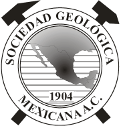|
BOLETÍN DE LA SOCIEDAD GEOLÓGICA MEXICANA, V. 52, n. 3, (2000) 1-9 http://dx.doi.org/10.18268/BSGM1995v52n3a1 |
|
Guía de técnicas utilizadas en el procesado de muestras de canal para el anallsis bioestratlgrafico con nanofosiles calcáreos
Patricia Hernández Bernal
Petróleos Mexicanos, Subgerencia de Operación Geológica, Edif. 3, Centro Técnico Admvo. PEMEX, Campo Sitio Grande 2000, Frac. Carrizo/ Villahermosa, 86035, Tab.
Abstract
Biostratigraphic studies based on calcareous nannofossils are generally done upon surface and ore samples, because these are the most reliable ones. Nevertheless, these samples are sometimes unavailable. Our main goal in this paper is to obtain the besl utility, based on drill cuttings for Mesozoic and Tertiary calcareous nannofossil biostratigraphic studies. Some techniques for the sample processing have been achieved over the following conditions: drill cuttings with water based mud without washing for lime; with oil based mud witbout washing for claystones; rinsed or washed for limestones.
The subsurface specialist participation is important for the Paleontologist, because it contributes with important information about clayey intervals contained in the well, and about lithologic cuttings that have to be selected ror each interval. Therefore information about gamma rays, spontaneous potential and the lithologic well report are required. The sample should contain, at least a small percentage of calcium carbonate, otherwise it could be barren. Due to this reason, the samples have to be reactioned with HCl 10%. It has been noticed that is more probable to find abundant calcareous nannofossils when selectíng clayey intervals, and the preservation is from good to moderate.
While selecting specific Iithologic cuttings for each clayey interval and considering the further well mud extraction from the sample, contamination risk with calcareous nannofossils from other intervals is lower.


